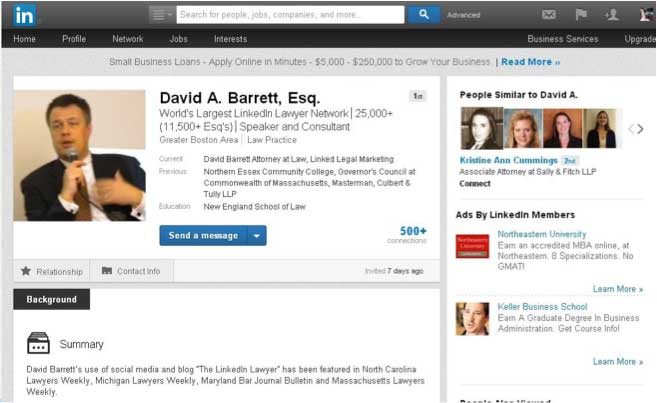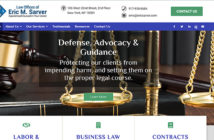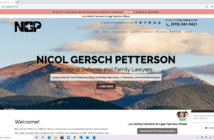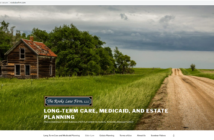“About half of my clients find me directly through LinkedIn. The other half find me through a Google search that leads to LinkedIn … or some equivalent.”
Baruch C. Cohen is a bankruptcy and business litigation attorney in Los Angeles, California. He was selected by his peers to be one of the Top 100 lawyers in Southern California, making him a “Super Lawyer.” He is also the founder of American Trial Attorneys in Defense of Israel. He can be found at LinkedIn at http://www.linkedin.com/in/baruchcohen and at his blog at http://attorneysdefendingisrael.blogspot.com/. David A. Barrett is a general practice and civil litigation attorney in Boston, Massachusetts. He boasts of having the largest lawyer network on LinkedIn. He also trains other attorneys in social media marketing and owns/manages 20 LinkedIn groups. These include:
- Boston Lawyers and Attorneys
- Appellate Lawyer Network
- Class Action Lawyer Network
- Divorce and Family Lawyer Referral Group
- Employment Law Network
- Real Estate Lawyer Network
- Workers Compensation Lawyers
You can find David A. Barrett on LinkedIn at http://www.linkedin.com/in/linkedinlawyer and at his website at http://www.rainmakervt.com/. The flagship quote and nugget of wisdom to gain from Mr. Cohen is “LinkedIn will not work automatically. You have to work the room.” From Mr. Barrett, lawyers should listen when he says, “Develop a marketing plan for each individual practice you have.”
1. Have you obtained any new clients from LinkedIn?
Cohen: Yes, I have. Barrett: Yes.
2. Did these new clients follow any particular LinkedIn path to you or did they come from a variety of ways?
Cohen: It’s hard to trace where they come from exactly. My net is too large. Based on my recollection, most of the clients I have acquired through LinkedIn were not directly acquired through LinkedIn but from referrals by other lawyers who found me on LinkedIn. Barrett: Some clients are apprehensive about telling you which website they came through. I get a lot of answers like “I found you online” or “You were referred to me through an attorney you were connected with on LinkedIn.” I can discern that about half of my clients find me directly through LinkedIn. The other half, even if they don’t find me directly through LinkedIn will find me through a Google search that leads to LinkedIn – or some equivalent. When potential clients Google a lawyer, a lot of times they’ll find his LinkedIn profile or his profile on another social media channel. It’s still a benefit because it acts as social proof. If you have enough connections or a profile that demonstrates your expertise and samples of your work, then a potential client can see if you are the attorney they want to hire. Today’s legal clients are very savvy. They do a lot of research before contacting an attorney. They’ll do research on the law and what they need to do to pursue legal action before they contact an attorney, unlike legal clients of the past who just threw themselves at the mercy of a lawyer. The Internet has changed how people find legal counsel.
3. Are you employing any particular process or approach on LinkedIn to generate new clients?
Cohen: Yes. I have a firm belief in maximizing connections. I have 4,407 connections. According to LinkedIn, that gives me access to millions of members based on their system of three degrees of connectivity. I update my profile regularly. Every time I post an update it goes out to 4,407 contacts. Every legal event that I’m a part of gets posted. If I win a summary judgment, it gets posted. I post everything on my profile page and every single group that I’m affiliated with. Each one of those groups has thousands of people who are members and they see it. By posting at this volume, anyone who needs or knows of someone who needs a business litigation attorney will think immediately of Baruch Cohen. Barrett: One source of potential client referrals is other lawyers. For instance, a lawyer in North Carolina may be working for a client and need to have some kind of legal service here in Massachusetts, so they need to find someone to handle that. Then it’s a matter of going to the phone book or going to LinkedIn to find an appropriate lawyer.

My having the world’s largest LinkedIn lawyer network means I’m able to maximize the number of lawyer referrals both in and outside of Massachusetts. In addition to my direct network, I own about 20 lawyer networking groups on LinkedIn, and I’m a member of several more. With 25,000+ direct connections and more than 10,000 lawyers directly connected, I am able to attract referrals easily. I was one of the first ones to set up a network based on profession and geography. That was one of the ways I used to build my network. I used to own more networks.
4. How many groups are you a member of?
Cohen: I don’t overkill it when it comes to groups. I’m a member of 49 groups. They’re all law-related, pro-Israel related, or related to Orthodox Jews. I post all of my accomplishments as a lawyer in California and all of my accomplishments in the Jewish courts and arbitration panels. So I get a lot of business from the Jewish community from that. I am familiar with Hebrew, Yiddish, and Jewish law. I don’t advertise it, but I have a Rabbinic degree, so I use LinkedIn to generate a tremendous amount of business in that regard. Barrett: A total of 42 when you count the ones I own. Being a member of other groups is a great way to build direct connections. A lot of folks, maybe lawyers in particular, because they’re busy, join LinkedIn and just expect things to happen. It’s important to be active in groups and to actively build connections. The most productive approach to LinkedIn is to look at connections as virtual handshakes. From there, you can make a phone call or meet for lunch. You try to find a way to work together that blends into your normal lead development process.
5. Do you only promote information about yourself?
Cohen: No. I also promote news items associated with cases I’m a part of. So if I win a judgment and that gets written up in a newspaper, I’ll post a link to that news article. That opens up a universe of contacts. I used to go to networking events and got nowhere. I’m a litigator, and if I met a rug merchant, the amount of commonality I could expect is nil. But with LinkedIn, I can target specific business groups, CPAs and business owners, and audiences that I’m interested in connecting with because they are the perfect audience for me. I use LinkedIn to fine-tune my search for the perfect audience. Barrett: There are two aspects of your LinkedIn profile that are important. The first is, what kind of information do you put on your profile? It’s important to realize LinkedIn is constantly changing. For instance, a year ago you could use applications on LinkedIn from various providers. You could share work samples and documents you’ve written. Some of those applications are no longer available, so you have to find another way to share information on LinkedIn. In reality, it’s constantly changing. I encourage my lawyer marketing clients to fill out a robust profile and to include a photo. A lot of lawyers haven’t really decided which practice areas they want to market. Some of those decisions have to go into building a profile based on the lawyer’s particular marketing plan. When it comes to sharing content, you have a couple of opportunities to do that. One is through your news feed that goes to folks you are directly connected with. The other one is where you’re able to post links in groups under the Discussions tab. A lot of time they’re discussion starters. Share links that initiate discussion or share your expertise. Both of those are good things to do. What kinds of things you share depends on your marketing plan. A great thing to share is your own content – for instance, blog content. A blog is a hub with the lawyer’s content being his central location online, then the lawyer can share that content on LinkedIn and other social sites. Through sharing on these sites, you can build readership for the blog. It may be useful to share content from Time Magazine, but you really want to share your own content.

6. How did you find LinkedIn?
Cohen: About 3 or 4 years ago, I didn’t even know what LinkedIn was until a client ridiculed me and said, “Dude, you’re not operating in the 21st century if you’re not on LinkedIn.” Barrett: I’ve been here since 1997. I was one of the early adopters. One of the important things I did was adopt a lot of the methods used by top people on LinkedIn and almost none of those were lawyers. I was one of the first lawyers to adapt the methods of top LinkedIn users.
7. What would you consider is the best LinkedIn feature for lawyers trying to find new clients?
Cohen: Without a question, it’s the update window. Imagine needing to send out a mailer of your accomplishments. You would need a graphic artist, a mailing list, etc. When you have 4,407 people following you and you just posted an update, you just saved yourself a lot of money. You’re making yourself available on a daily basis to thousands of people. My profile is a static billboard of my accomplishments, but people do look at it before they retain me, so that has value. Another thing, when I file with the court, I add my LinkedIn address to the documents. That way, everyone associated with the case sees it, and it’s a public document. Every time I speak publicly, I post it on LinkedIn. It’s a healthy, aggressive way to grow your business. You can also program LinkedIn to send you articles that you want to read. Now, my business savvy has quadrupled because I’m able to get the articles that feed into my industry. Barrett: The profile description is really valuable for lawyers trying to find new clients. For instance, if you are an employment lawyer who works with companies on employment litigation and you are looking to find human resources directors in your state, the profile description and the search function help you find those kinds of professionals whereas on Twitter it’s more difficult to find professionals because the profile feature and search feature are not as robust. The kind of professional environment that LinkedIn is can help lawyers find the right networking target. You have to think about your practice and find out who they are. Once you identify your target, you can use search and groups to find those people.
How long should a new user of LinkedIn figure on working at it until new clients start coming in?
Cohen: After completing your profile. When there’s a lull in my business, I go on a major LinkedIn surge to generate business. It doesn’t work if you think it will automatically bring you business. You’ve got to work the room. If you’re a passive user, it’s like a billboard. But if you’re proactive, then you’ll find prospective clients. I read the Los Angeles Business Journal. If I see a story about a new lawsuit, I’ll look up the parties on LinkedIn and see what they’re about. I’ll post an update about the article on my profile page and in all my groups. That’s not soliciting business directly. That’s just me making myself available. Those people will see my comments and seek me out. Sometimes it works, sometimes it doesn’t. I was reading about a business dispute that hadn’t made it to the court yet. I commented on it in my LinkedIn groups. The counsel for the defendant contacted me and I ended up with a great client. You can program LinkedIn to feed you business stories that are of interest to you. You can get stories from all over the world or geographically. I’m also the manager of the American Trial Attorneys in Defense of Israel group. That group has a lot of followers, and I write a blog by the same name. A lot of judges and lawyers follow it, so when I post something that is pro-Israel on the blog, I’ll link to it in all of my groups. It gets recognized by my core followers.

Barrett: It’s different for every lawyer. For example, a lawyer who just passed the bar and doesn’t have a focused practice area or niche probably won’t gain much of an advantage because you just set up a LinkedIn profile. Marketing is only as good as the product you have to sell. It’s a competitive environment. You have to find a marketable niche. If you have a lot of expertise and a very well thought out marketing plan, that process and turnaround time can be very quick. Certain niches are very specialized, so getting referrals from other lawyers can happen quickly. LinkedIn won’t make a professional into an instant success without some work.
9. What suggestions or recommendations do you have for other attorneys regarding new client generation on LinkedIn?
Cohen: Do not think it happens automatically. I devoted 2-3 days of ripping through every tool of LinkedIn to understand how the big boys play. Don’t treat it like Facebook. It’s not Facebook. Don’t post stupid stuff like “Hi, I’m breathing.” Post things that draw a true picture of who you are. Facebook is a playground. LinkedIn is for professionals. With LinkedIn, you have a resume that is far stronger than a paper resume. You can post articles, publications, podcasts, presentations, and all kinds of things that give people an idea of who they are going to do business with. Use all of the tools at your disposal. Barrett: The most important thing is to develop a marketing plan for each individual practice that you have. A lot of lawyers work in two or three legal practices, it’s important to break each one down into an individual business. Clients for different practices are different and they use different criteria for finding a lawyer. You have to ask, What are the problems facing this kind of client when looking for this type of lawyer? Understanding that process will lead to better marketing.
Parting tip:
Cohen: Do not think it’s an automatic fix. It is a process that has to be nurtured properly with intelligence. The old school of clients coming to me doesn’t work with LinkedIn. Take the time to develop your profile and make sure it’s accurate. Do that first. Put together a thorough, comprehensive, meaningful profile. Ask your colleagues to connect with you and recommend you. If I see no one is recommending you, doesn’t that raise a red flag? If you’ve been in business for 30 years and you don’t have any recommendations, that doesn’t look good. Be sure to put your e-mail on your profile so people can contact you. Make it easy for them to contact you. Barrett: Everyone has to decide if they’re going to be a bullpen networker or a closed networker. I think everybody figures out where they fall on that continuum. By accepting requests to connect from more people than I actually knew personally, I was able to grow my network at a rate that was much faster than meeting people first then connecting on LinkedIn. I was able to grow to a point where I could reap the benefits of a very large LinkedIn network. If you’re more closed in your approach, it will take longer.



